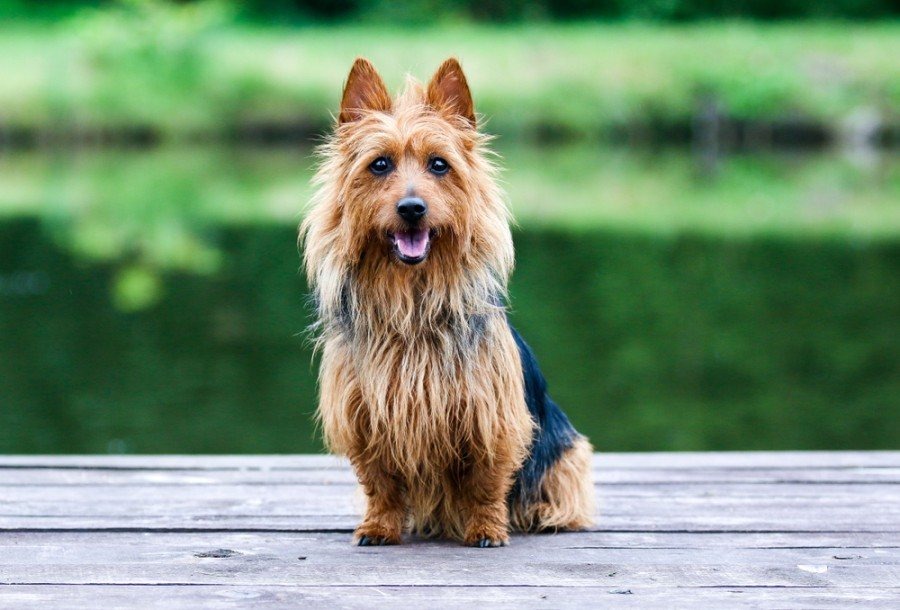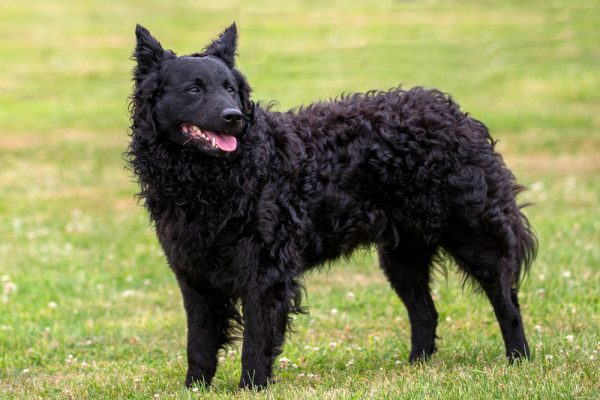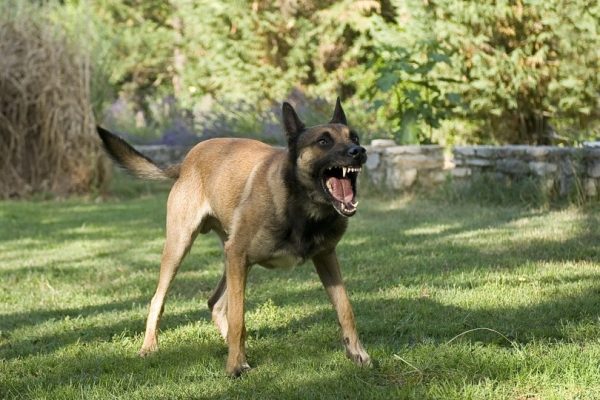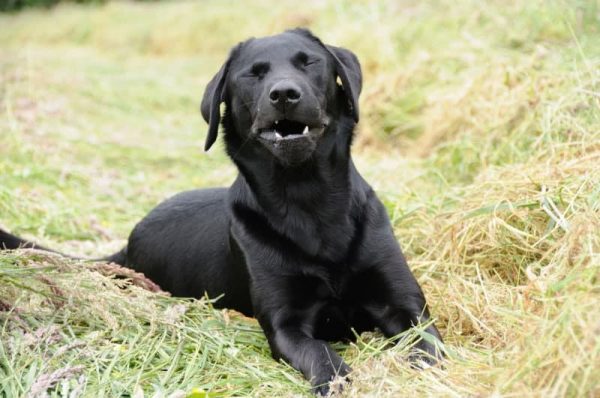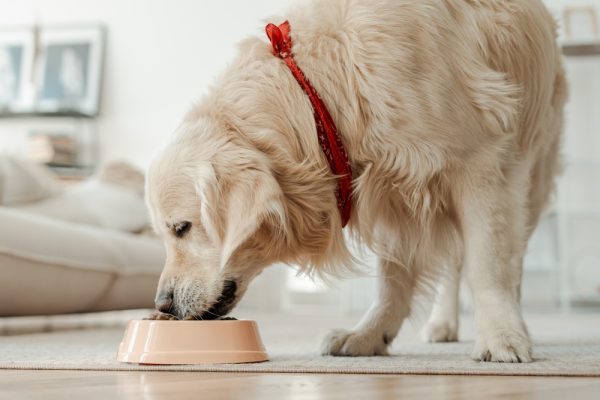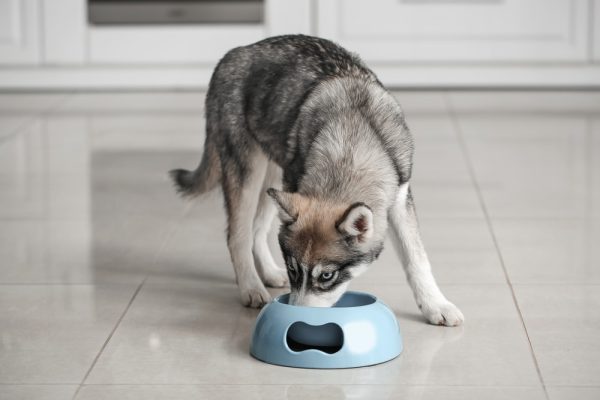In this article
View 8 More +Small yet sturdy, the Australian Terrier has been around since the 1800s. These spunky dogs are smart and eager to learn, and their shedding is minimal, which is a huge plus for owners. Whether you’re simply a dog enthusiast or are thinking of getting an Australian Terrier as a pet, here is all you need to know about the breed.
Breed Overview
Height:
9–11 inches
Weight:
12–16 pounds
Lifespan:
12–15 years
Colors:
Red, sandy, blue and tan
Suitable for:
Active families, singles, apartments, houses
Temperament:
Lively, spirited, self-assured, confident
The Australian Terrier is a jolly little breed that was originally developed to be a companion. These dogs are happiest when they’re spending time with their humans and can be prone to problems like anxiety and depression if left alone too often or for too long. Extremely alert, this breed makes an excellent watchdog within the family home. With loads of energy to unleash, the average Aussie Terrier can spend hours in the yard digging, playing, and exploring.
Australian Terrier Characteristics

Australian Terrier Puppies
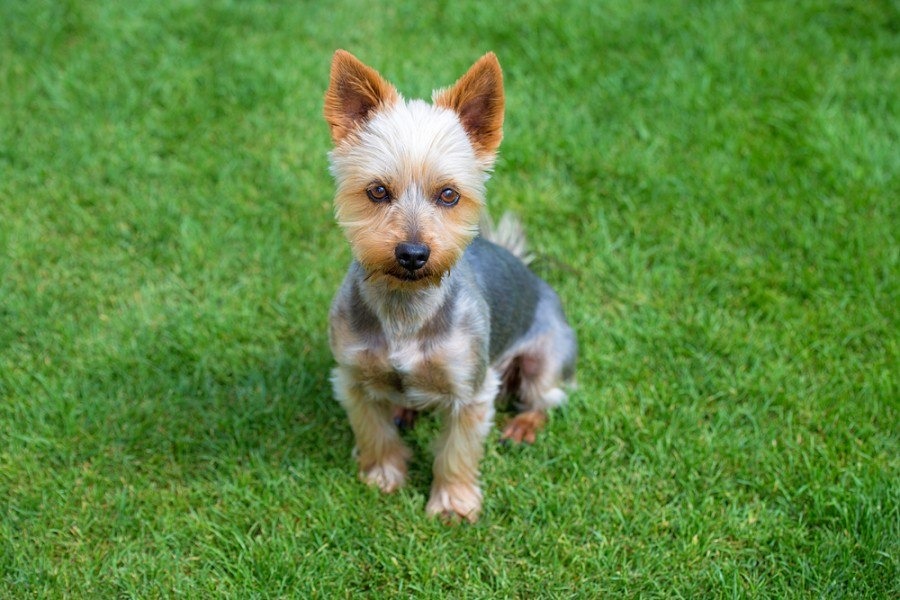
As pups, Australian Terriers are extremely curious and like to thoroughly explore their surroundings. They learn a great deal during puppyhood, like what’s acceptable behavior and what isn’t. Potential puppy owners should know that boundaries will be pushed! These sweet-natured puppies want nothing more than to fit in with their human pack. They don’t like being isolated from their companions and can develop destructive behaviors if left alone for too long.
These puppies typically love playing with children and learning new skills with a bit of direction. While feisty and playful during the day, an Australian Terrier puppy usually has no problem cuddling up for a nice sleep at night. Puppyhood is the perfect time to start obedience training and to socialize with other people and animals.
Australian Terrier Origin & History
It all started for the Australian Terrier when Australians desperately needed help controlling rodent infestations in gold mines, waterfronts, and farms. They decided to develop a small but sturdy breed with a protective coat that could handle the job of keeping rodents at bay. They utilized short-legged dogs with rough coats that were transported to Australia from Britain in the first sailing ships that arrived on the mainland.
These dogs came about in the 1820s and have since become loyal companions that Australians prize. This is the first breed to be recognized in the country, establishing them as a breed that is worth celebrating. It isn’t clear exactly what breeds were used to create the Australian Terrier, but most agree that the Skye Terrier, Black and Tan Terrier, and even the Yorkshire Terrier were all involved in the process.
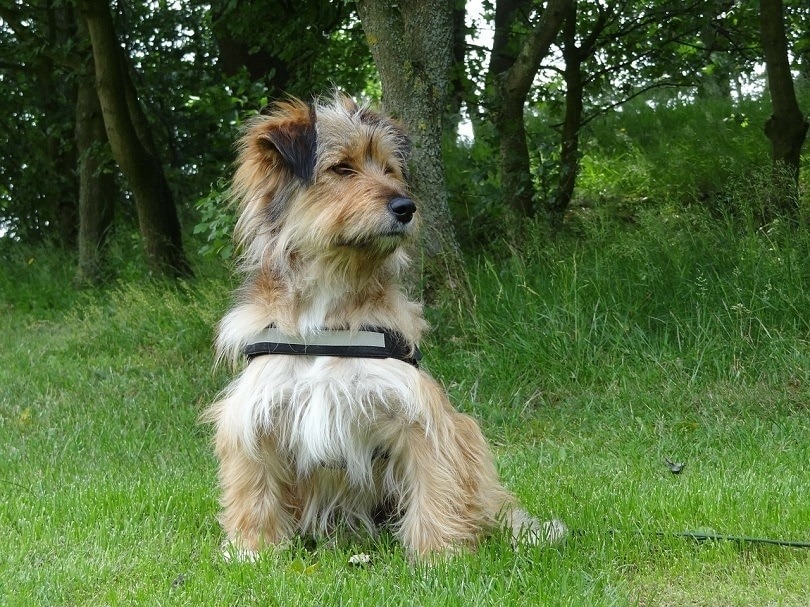

Temperament & Intelligence of the Australian Terrier
The Australian Terrier is a working dog with plenty of energy and loves spending time with human companions. They’re great rodent hunters, as that is what they were bred for, but that is not the limit to their abilities. These impressive dogs are loyal and protective, so they can be taught to work as watchdogs in their homes. They are not aggressive or dangerous to would-be intruders, but they will cause a ruckus and ensure that anyone who is home knows that something is going on outside the home.
These dogs are friendly and can be quite sociable when exposed to other people and dogs as puppies. They can get boisterous and overexcited when in high-activity spaces, but daily exercise helps keep them in check. This vocal breed likes to howl and bark as a major form of their communication. While they don’t mind lounging around with their companions, these dogs are far from lazy and won’t stay sitting for long.
Are These Dogs Good for Families? 👪
These dogs are great pets for families with children because they are so playful and energetic. The kids can help keep them company throughout the day! They are on the smaller side too, so they should not pose a high threat of accidental injuries to little ones in the household. These loving pups are usually easy to get along with and smart enough to pick up obedience training quickly.
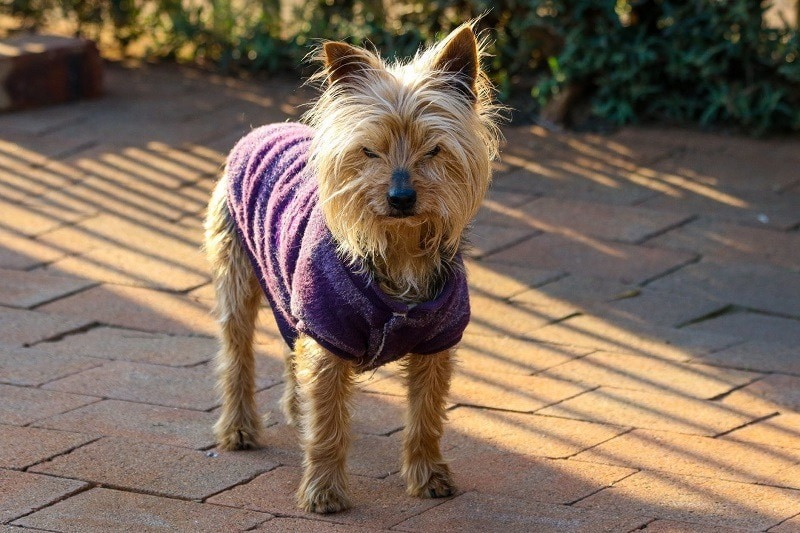
Does This Breed Get Along With Other Pets?
The Australian Terrier can get along with other pets in their household, but they should be socialized as puppies to ensure harmony. They have an instinct to chase small rodents and animals, so they are not a great fit for households that have mice, ferrets, rabbits, or other small critters living in them. Exposure to other dogs outside of the house will help ensure that an Australian Terrier can get along in public settings like dog parks.
However, due to their territorial nature, some Aussie Terriers won’t get along with other animals at all. Still, the more often they are introduced to dogs in public spaces while still puppies, the less likely they will be to become territorial or aggressive when they’re out and about.

Things to Know When Owning an Australian Terrier
Food & Diet Requirements 🦴
The Aussie Terrier might not be a large dog, but their highly active nature means they expel plenty of energy, so many owners are surprised at how much (and how fast!) they can eat at mealtime. Still, these dogs shouldn’t eat more than what is suggested on the package of their food or what is recommended by a veterinarian. Choose food that is formulated for each life phase of your pup’s life, such as puppy, adult, or senior.
Exercise 🐕
Due to the energetic nature of the Australian Terrier, daily exercise is a necessity to keep them happy and healthy. This breed should go on daily walks of at least 30 minutes in length, along with having plenty of time to run and play. When outside, this breed should always be leashed or detained in a fully fenced yard, or they are likely to sprint off and chase squirrels, cats, and other small animals that are running around outside. These dogs love activities like fetch, hide-and-seek, and swimming.
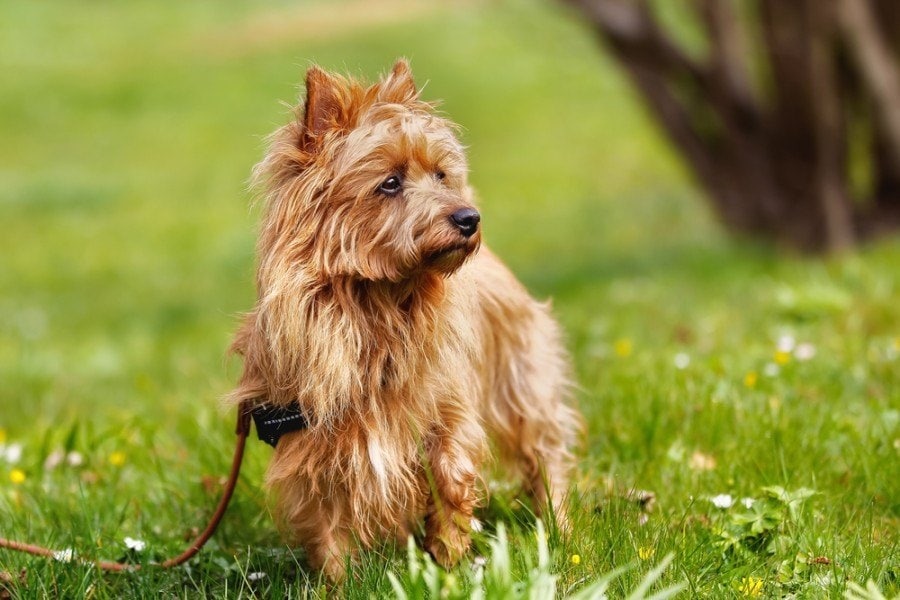
Training 🎾
Introductory obedience training sessions or puppy classes should begin as soon as an Australian Terrier comes home for the first time. This breed gets bored easily, so training sessions should be kept short, sweet, and to the point, and they should happen as often as two or three times a day. These dogs can be a bit stubborn, so consistency is the key to successful training. Treats and praise can go a long way in getting this breed to do the right thing.
Grooming ✂️
This adorable dog breed has a thick double coat that happens to be weatherproof to keep them protected in harsh conditions. It hardly sheds and effectively repels dirt and grime, which makes for easy maintenance. A light weekly brushing should do the trick. Sometimes, the long hairs growing between and around their eyes can become irritating and may need to be trimmed or plucked occasionally. Bathing with dog-safe shampoo should only take place when it seems necessary. The nails can stay naturally trimmed if daily walking on concrete takes place; otherwise, a quick trim with clippers or a grinder can keep nails smooth.

Health and Conditions 🏥
Australian Shepherds are healthy dogs in general, with few susceptibilities to health problems. Quality breeders test their breeding stock to ensure that they don’t breed puppies that are genetically susceptible to problems like luxating patella. Still, there are certain conditions that this breed could end up with.
- Thyroid problems
- Skin sensitivities and allergies
- Legg-Calve-Perthes disease

Male vs. Female
The biggest difference between male and female Australian Terriers is their size. Females tend to be lighter and shorter than their male siblings. Also, females that are not spayed tend to be more territorial than males. However, for the most part, there are not any differences between the sexes that would make one a better pet than the other.

3 Little-Known Facts About the Australian Terrier
1. They’re Prey-Driven
Due to being bred for rodent control, Australian Terriers are prey-driven, which means that they can be hard to control when small animals are running around. While they might know to stay near you during a walk and wouldn’t dare leave your side without a leash when there are no distractions around, chances are that they would bolt if they saw an animal scurrying nearby. Therefore, it’s important to ensure that any Australian Terrier that is spending time outdoors is always leashed and supervised.
2. They Can Be Territorial
This breed is known for being territorial, which can be a problem if they are not well-socialized at a young age. They may never accept “strange” dogs in their own homes, though, so if they will be living with another dog, the other dog should be introduced to the household before or with them.
3. They’re Prone to Developing Separation Anxiety
The typical Australian Terrier doesn’t like spending time alone. So, if they are left by themselves all day while everyone is at work or school, they can get lonely and destructive and even develop separation anxiety. It’s best to make sure someone can come and spend time with them during the day if everyone must be away for whatever reason. Ideally, someone will be home most days to keep their household pup company.


Conclusion
Australian Terriers are proud, outgoing, playful, loyal, and protective little pups that can make great family pets. They are high-energy and don’t like being by themselves, so caretakers should be prepared to engage in daily exercise activities and ensure that time spent at home alone is kept to a minimum.
See also:
Featured Image Credit to: Lisjatina, Shutterstock
